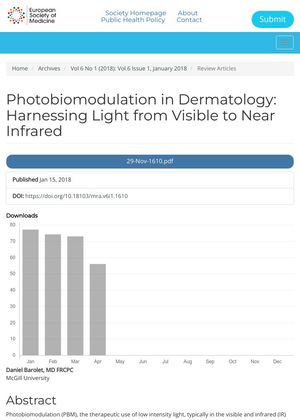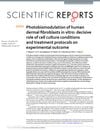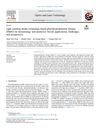Photobiomodulation in Dermatology: Harnessing Light from Visible to Near Infrared
January 2018
in “
Medical research archives
”
Photobiomodulation PBM low-level laser therapy visible light infrared light wound healing inflammation reduction dyspigmentation melanin synthesis inhibition hyperpigmentation skin rejuvenation alopecia cellulite skin diseases acne treatment hair regrowth androgenetic alopecia collagen growth fibroblast cells high-intensity blue light Propionibacterium acnes light therapy laser therapy blue light therapy hair loss skin lightening acne bacteria hair growth skin repair

TLDR Low-intensity light therapy is effective for skin healing, reducing inflammation, and treating various skin conditions.
Six years ago, the study "Photobiomodulation in Dermatology: Harnessing Light from Visible to Near Infrared" explored the use of low intensity light, or Photobiomodulation (PBM), in treating various skin conditions. PBM uses visible and infrared wavelengths to stimulate biological processes leading to cell repair and survival. It was found effective in accelerating wound healing, reducing inflammation, treating dyspigmentation, inhibiting melanin synthesis in hyperpigmentation cases, and promoting skin rejuvenation. It also showed potential in treating alopecia, cellulite, and other skin diseases. The study also discussed the use of light therapy for skin rejuvenation, acne treatment, hair regrowth, and wound healing. For instance, low-level laser therapy was found to stimulate hair regrowth in individuals with androgenetic alopecia and collagen growth in fibroblast cells, crucial for wound healing. High-intensity blue light was shown to eradicate Propionibacterium acnes, a bacterium contributing to acne. The study concluded that PBM is a valuable complementary treatment in dermatology.



